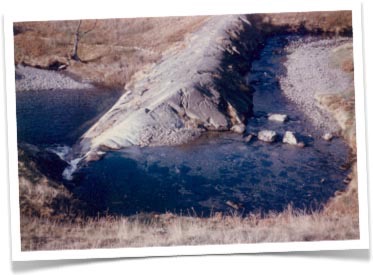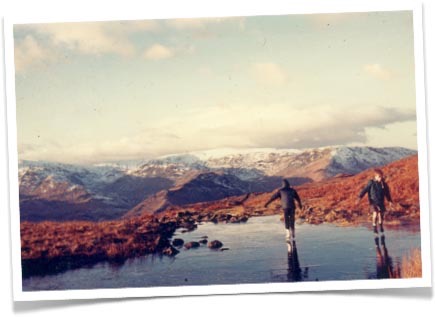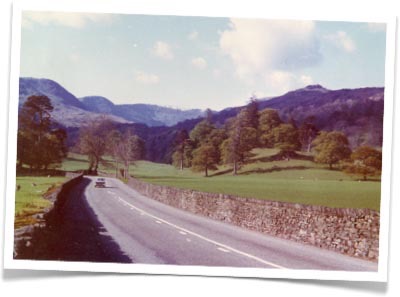 Rydal is a village or hamlet
Rydal is a village or hamlet
situated in the valley between Grasmere and Ambleside.
The name is obscure.
In 1240 Rydal; the valley in the clearing on the forest, and in 1275 Rydal Water was termed Routhemere: Lake of Rothay,
the Rothay being the name of the river running out of the Lake.
The first inhabitants, few in number did not live in the valley bottom as we know it, because then it was just a land of swamp and scrubby woodland but probably lived in the region above Hart Head. They did not cultivate the land but lived on what they could take by hunting and fishlng. It is interesting to note that at least in 1000BC there was a stone axe factory and the products have been spread over a very wide area showing that there was some form of trade even in those days over long distances.

To come to historic times, in the second century AD the Romans advanced through these regions and a Fort was established at Ambleside.
Historically a great advance was made when the Norsemen settled in these parts in about the tenth century
They were a sea roving race who came down the West Coast of Scotland and made early settlements in the Isle of Man and near Dublin in lreland. From there they made settlements on the Cumberland coast and besides being a race of sea rovers were good stock farmers. They were able to force the Celts and Britains back into the Fells and indeed used them in part as their slaves. Their system was to have a home spot and their sheep and cattle were Kept on the lower fells at places they called saters. the very name Ambleside is derived from the name of Hamel a norseman hence Hame Isater. One could go on for a long time describing the settlements of the Norsemen and indeed they gave us place names in all directions although a few of the old British place names persisted such as Helvellyn.
For at leasttwo centuries these people dominated our land and it was not until the 11th century that the Norman sway was established. For a long time what we know as Westmorland could have been considered Scottish but by the year 1200 it became established as part of England and Norman Barons were given jurisdiction so that our part of Westmorland became part of the Honour of Lancaster.
As this is a short sketch of the history of Rydal it may be as well to jump to the time when Isabella an heiress of the Lancaster family was married to Thomas Fleming of Coniston in the year 1443. These Flemings are assumed to have come over with the Conqueror and were settled in Furnessl and west Cumberland and since that time the same family has owned land in Cumberland and Westmorland.

The earliest home of the Flemings was on the Old Hall Hill by the Rydal Cricket Club ground and remains of their habitation are still to be found there. The date of the
foundation of the present Rydal Hall is unknown but one of the important things in those days was a water mill for the production of flour and this undoubtedly was situated at Rydal Hall.
It may be assumed that the earliest habitation there may be dated to about 1500 and gradually the old hall on the hill went out of use.
(Pictures from the 1965 Village Scrapbook)